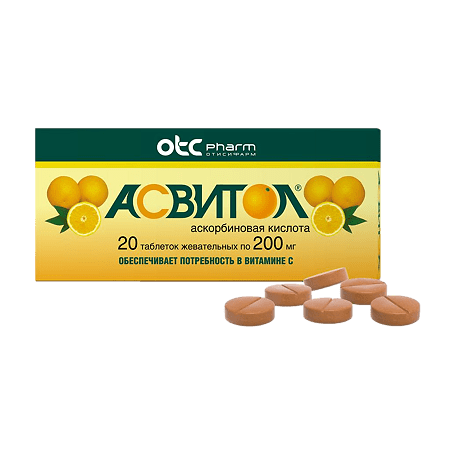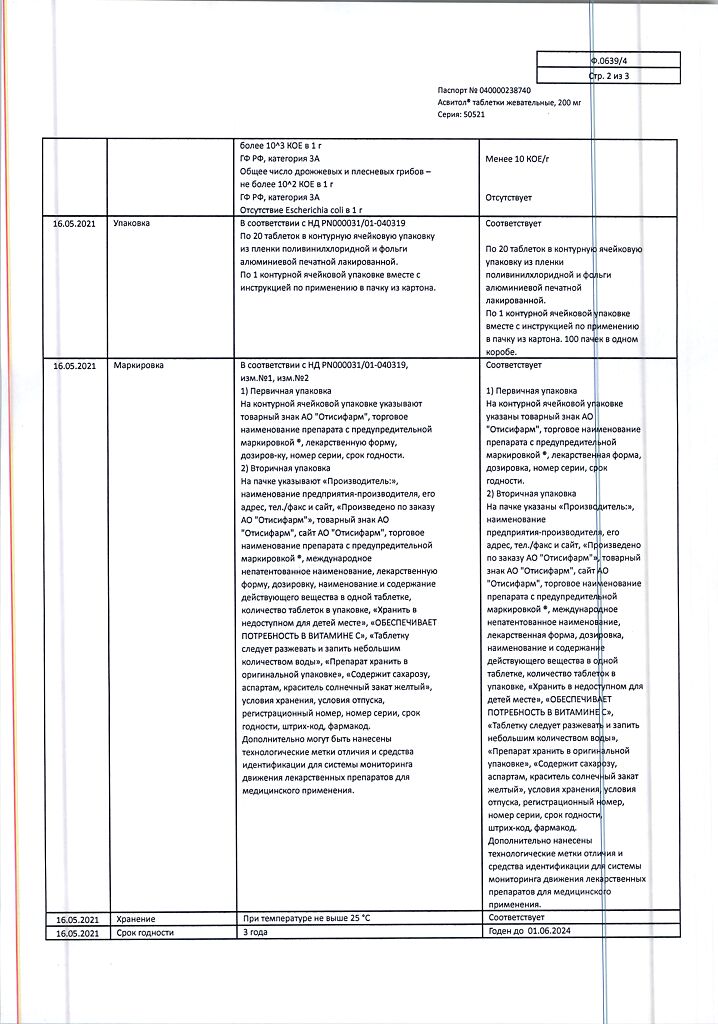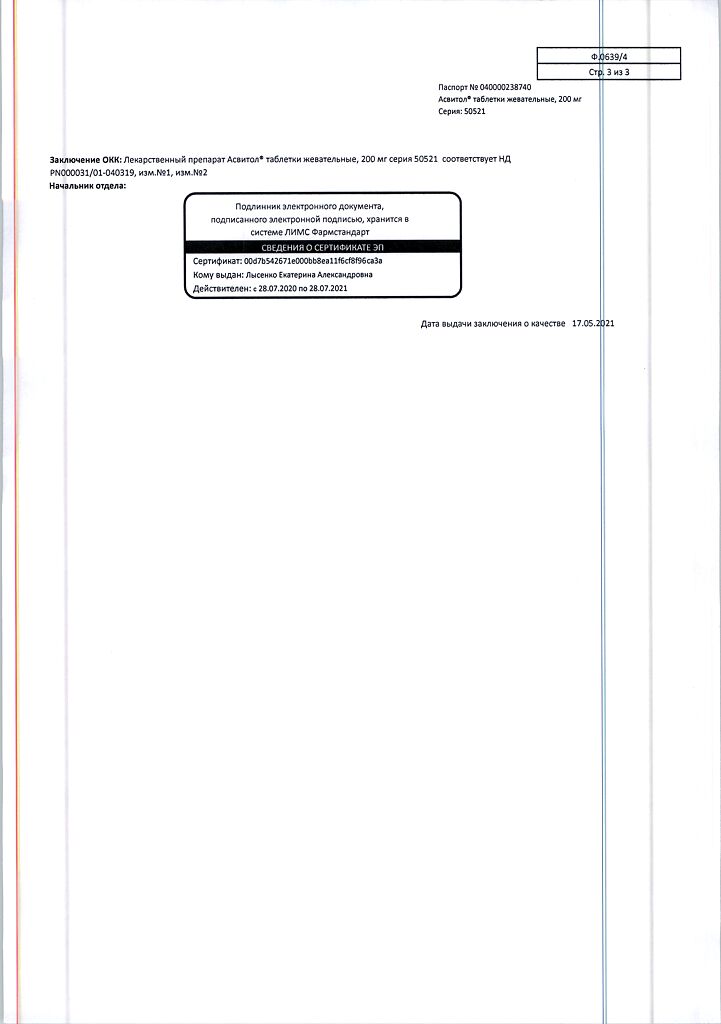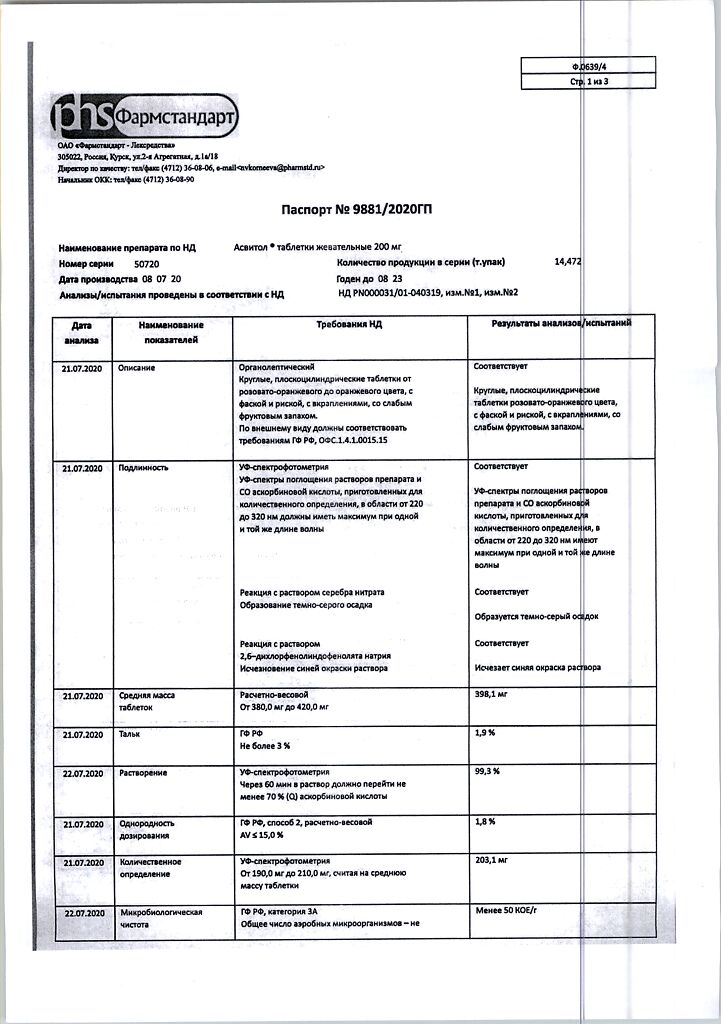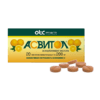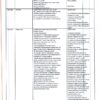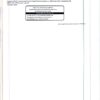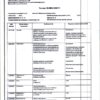No products in the cart.
Asvitol, 200 mg 20 pcs.
€3.67 €3.26
Description
Participates in the regulation of redox processes, carbohydrate metabolism, blood coagulation, tissue regeneration, in the synthesis of steroid hormones; Increases body resistance, reduces vascular permeability, reduces the need for vitamins B1, B2, A, E, folic acid, pantothenic acid. Satisfies the increased body’s need for vitamin C in diseases accompanied by fever.
.
Indications
Indications
Prevention and treatment of vitamin C hypo- and avitaminosis;
As an adjuvant: Hemorrhagic diathesis, nasal, uterine, pulmonary and other bleeding, including those caused by radiation sickness; overdose of anticoagulants, sluggishly healing wounds and bone fractures, dystrophies, increased physical and mental stress, during recovery from severe, long-term illness.
Composition
Composition
Composition per tablet:
The active ingredient:
Ascorbic acid – 200.0 mg.
Additional Ingredients:
sucrose (white sugar) – 177.9 mg, aspartame – 3.0 mg, magnesium stearate – 3.0 mg, stearic acid – 1.0 mg, talc – 6.7 mg, low molecular weight povidone (polyvinylpyrrolidone low molecular weight, povidone K 17) – 5.7 mg, ethyl cellulose – 1.3 mg, sunset yellow dye – 1.0 mg, orange flavoring – 0.4 mg.
How to take, the dosage
How to take, the dosage
The drug is taken orally after a meal. The tablet should be chewed and drunk with a small amount of water.
For preventive purposes: 200 mg (1 tablet) per day in adults.
For therapeutic purposes: 1-2 tablets 1-2 times a day in adults (maximum therapeutic dose is 1 g a day).
Interaction
Interaction
Enhances blood concentrations of benzylpenicillin and tetracyclines; at a dose of 1 g / day increases the bioavailability of ethinylestradiol. Improves intestinal absorption of iron preparations (converts trivalent iron to divalent iron); may increase iron excretion if used concomitantly with deferoxamine.
Acetylsalicylic acid (ASA), oral contraceptives, fresh juices and alkaline drinking reduce absorption and assimilation. Concomitant use with ASA increases urinary excretion of ascorbic acid and decreases ASA excretion.
ASA reduces absorption of ascorbic acid by about 30%. Increases the risk of crystalluria during treatment with short-acting salicylates and sulfonamides, slows renal excretion of acids, increases excretion of drugs that are alkaline (including alkaloids), reduces the blood concentration of oral contraceptives.
Enhances total clearance of ethanol, which in turn reduces the concentration of ascorbic acid in the body. Quinoline series drugs (fluoroquinolones, etc.), calcium chloride, salicylates, glucocorticosteroids in long-term use deplete ascorbic acid reserves. With concomitant use it reduces the chronotropic effect of isoprenaline.
In long-term use or use in high doses may disrupt disulfiram-ethanol interaction. In high doses increases renal excretion of mexiletine. Barbiturates and primidone increase ascorbic acid excretion in the urine.
Decreases therapeutic effects of antipsychotic drugs (phenothiazine derivatives), tubal reabsorption of amphetamine and tricyclic antidepressants.
Decreases the effectiveness of heparin, indirect anticoagulants.
Special Instructions
Special Instructions
Due to the stimulating effect of ascorbic acid on the synthesis of corticosteroid hormones, adrenal function and blood pressure should be monitored.
Long-term use of high doses may suppress pancreatic insular function, so it should be regularly monitored during treatment.
In patients with elevated iron content in the body ascorbic acid should be used in minimal doses. Prescribing ascorbic acid to patients with rapidly proliferating and intensely metastatic tumors may worsen the course of the process.
As a reducing agent, ascorbic acid can distort the results of various laboratory tests (blood glucose, bilirubin, transaminase activity, LDH).
Impact on ability to drive vehicles, mechanisms
The use of the drug in accordance with the instructions does not negatively affect the psychomotor functions associated with driving or operating machines and mechanisms.
Long-term use of the drug in high doses may cause side effects such as headache, increased central nervous system excitability, increased blood pressure. In such case it is necessary to exercise caution while driving motor transport and operating machinery which require concentration and quick psychomotor reactions.
Contraindications
Contraindications
Hypersensitivity to the ingredients of the drug, thrombophlebitis, tendency to thrombosis, diabetes, kidney stone disease, childhood.
With caution:
Hyperoxalaturia, renal failure, hemochromatosis, thalassemia, polycythemia, leukemia, sideroblast anemia, glucose-6-phosphate dehydrogenase deficiency, sickle cell anemia, advanced malignancies, pregnancy.
Side effects
Side effects
Central nervous system (CNS): headache, feeling of fatigue, with prolonged use of high doses – increase of CNS excitability, sleep disorders.
Digestive system disorders: irritation of the gastrointestinal mucosa, nausea, vomiting, diarrhea, stomach cramps.
Endocrine system disorders: inhibition of pancreatic insular apparatus function (hyperglycemia, glucosuria).
Urinary system disorders: when used in high doses – hyperoxalaturia and formation of urinary stones from calcium oxalate.
Cardiovascular system: thrombosis; with high doses – increase in blood pressure, development of microangiopathies, myocardiodystrophy.
Allergic reactions: skin rash, rare anaphylactic shock.
Laboratory parameters: thrombocytosis, hyperprothrombinemia, erythropenia, neutrophilic leukocytosis, hypokalemia.
Others: Hypervitaminosis, sensation of fever, with prolonged use of high doses – retention of sodium (Na+) and fluid, impaired metabolism of zinc (Zn2+), copper (Cu2+).
Intense consumption of chewable tablets or oral forms can cause damage to tooth enamel.
Overdose
Overdose
When taking more than 1 g per day, heartburn, diarrhea, difficulty in urination and/or urine staining red, hemolysis (in patients with glucose-6-phosphate dehydrogenase deficiency) are possible.
Pregnancy use
Pregnancy use
The minimum daily requirement of ascorbic acid in the II-III trimesters of pregnancy is about 60 mg.
The minimum daily requirement during breastfeeding is 80 mg. The mother’s diet containing an adequate amount of ascorbic acid is sufficient to prevent vitamin C deficiency in the infant (it is recommended not to exceed the maximum monthly requirement of ascorbic acid by the nursing mother).
.
Additional information
| Shelf life | 3 years. Do not use after the expiration date printed on the package. |
|---|---|
| Conditions of storage | Store in a dry place, protected from light, at a temperature not exceeding 25 ° C. |
| Manufacturer | Pharmstandard-Leksredstva, Russia |
| Medication form | chewable tablets |
| Brand | Pharmstandard-Leksredstva |
Related products
Buy Asvitol, 200 mg 20 pcs. with delivery to USA, UK, Europe and over 120 other countries.

